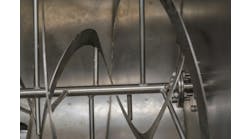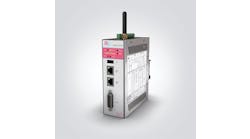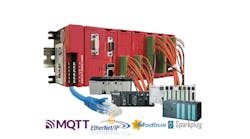Dan Hebert was senior technical editor for Control, Control Design and Industrial Networking.
What are the most important programming software features? In my previous column, I shared the supplier voice on this question, and this one shares what OEMs have to say. The five features listed as most important by suppliers were ease-of-use, automatic connection to the controller, one programming package for an entire family of controllers, ability to reuse code and support for multiple programming languages.Machine and robot builders agreed with suppliers on three of these five features—ease-of-use, support for multiple programming languages and ability to reuse code. However, the OEMs listed two other features of greater importance to them—global acceptance and the ability to accommodate motion and robotic control along with traditional PLC functions.
Ease-of-use covers a wide range of attributes expressed by Mike Roth, electrical controls engineer for automated packaging equipment builder Massman Automation. "Flexible tag naming, array structures, motion instructions and PID instructions should be available and well supported in the programming environment with online help and concise information pertaining to compilation errors. Features such as drag-and-drop, cut-and-paste and autofill fields all help reduce programming time and errors," explains Roth.
See Also: Industrial Controller Programming Top Needs
Daren Myren, controls engineer at packaging system suppler Aagard, says programming software should have these three ease-of-use features—programming that's easy to navigate and search, responsive communication with the PLC/PAC while online and trending/scope capabilities to monitor tag values and transitions.
[pullquote]Support for multiple programming languages is important to OEMs and suppliers alike, as is the closely related feature of support for a wide variety of instruction types. "At minimum, programming software should support ladder logic, structured text and sequential function charts (SFCs)," says Kevin Alexander, unified support manager for Bastian Solutions, a material handling systems integrator.
"For machines operating very sequentially, SFCs provide a very robust and streamlined method for controlling a sequence of operation, while providing easy troubleshooting. Structured text is best for programming communication sockets as it's much cleaner and more efficient than ladder logic. A wide variety of pre-built instructions allows a programmer to mitigate complexity and streamline code, and custom-built instructions that can be reused within the code should also be available," adds Alexander.
As Alexander notes, a wide variety of instruction types allows for scalability and reusability, a third feature important to OEMs. "Software that works for a variety of platforms allows a programmer to generate standards that can be used from project to project, improving reliability and allowing for much quicker implementation," concludes Alexander.
A feature cited by OEMs but not suppliers is global acceptance by the customer base of the software and its supported controllers. "The software must be globally accepted and utilized by factory managers, engineers and technicians," says Roth. "End users must be able to extract production data, make program changes and troubleshoot factory floor equipment. Poor performance, downtime and uncertainty can be attributed to the lack of availability, familiarity or ability to use PLC/PAC programming software. Rockwell Automation has an extensive distribution and support network in the United States and Canada. Because of this, most of our North American customers either mandate or readily accept equipment with their control platforms and programming software. It's apparent that Rockwell Automation has also made gains in Europe because of an increase of the acceptance of its use with Massman's customers outside North America."
Roth says the final feature of importance is the ability to accommodate PLC, motion and robotics. "Having to learn just one programming software package for multiple automation disciplines increases efficiency and creates an environment that brings an automation team together. Time and energy can be spent on the automation task at hand versus learning multiple software packages," notes Roth.
"Massman has a partnership with a well-known robot manufacturer because their hardware can be programmed and controlled via a Rockwell Automation control platform. A single programming software/language for multiple disciplines improves reliability, supportability and control simplicity, and it also allows information to be seamlessly shared between the PLC, motion axis and robot," explains Roth.





